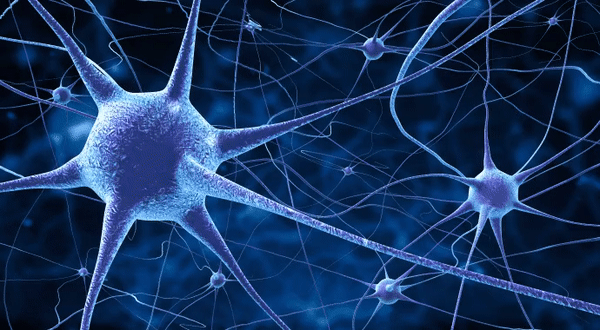https://github.com/tatevkaren/artificial-neural-network-business_case_study
Business Case Study to predict customer churn rate based on Artificial Neural Network (ANN), with TensorFlow and Keras in Python. This is a customer churn analysis that contains training, testing, and evaluation of an ANN model. (Includes: Case Study Paper, Code)
https://github.com/tatevkaren/artificial-neural-network-business_case_study
ann ann-model artificial-neural-network artificial-neural-networks bank-customers case-study churn-analysis data-science deep-learning machine-learning prediction-model predictive-analytics python3 tensorflow-tutorials
Last synced: 6 months ago
JSON representation
Business Case Study to predict customer churn rate based on Artificial Neural Network (ANN), with TensorFlow and Keras in Python. This is a customer churn analysis that contains training, testing, and evaluation of an ANN model. (Includes: Case Study Paper, Code)
- Host: GitHub
- URL: https://github.com/tatevkaren/artificial-neural-network-business_case_study
- Owner: TatevKaren
- Created: 2021-02-05T09:29:09.000Z (over 4 years ago)
- Default Branch: main
- Last Pushed: 2021-05-04T18:59:46.000Z (over 4 years ago)
- Last Synced: 2025-04-07T02:08:09.037Z (7 months ago)
- Topics: ann, ann-model, artificial-neural-network, artificial-neural-networks, bank-customers, case-study, churn-analysis, data-science, deep-learning, machine-learning, prediction-model, predictive-analytics, python3, tensorflow-tutorials
- Language: Python
- Homepage:
- Size: 6.5 MB
- Stars: 50
- Watchers: 2
- Forks: 23
- Open Issues: 0
-
Metadata Files:
- Readme: README.md
Awesome Lists containing this project
README
# Artificial Neural Network (ANN) Case Study
## About the Case Study
In this Business Case Study we predict the churning rate of the customers from the bank. In order to learn about bank's customers we will make use of one pf the Deep Learning techniques, the Artificial Neural Networks (ANN).From the millions of customers we have randomly selected 10K customers. We will use customer's characteristics to determine his/her probability of leaving the bank. In order to learn about bank's customers we will make use of one pf the Deep Learning techniques, the Artificial Neural Networks (ANN).
Moreover, we will use popular Python libraries such as Tensorflow, Keras and Machine Learning techniques such as Adam Optimizer to train the ANN model and predict the churn rates.
- Data: View here
- Paper: ANN Case Study Paper: View here
- Python Code: View here
- Sample Output: View here
- Sample Output 2: View here
## Little background in ANN
Neural networks adapt themselves to the changing input so that the network generates the best possible result without the need to redesign the output criteria. The functionality of neural networks is often compared to the one of the multiple linear regression, where one uses multiple input features, also called independent variables, to predict the output variable, the dependent variable. In case of Neural Network we also use input features, referred as **Input Layer Neurons** to get information and learn about the outcome variable, referred as **Output Layer**.The main difference between such regression and Neural Network is that, in the case the former the process runs in one iteration by minimizing the sum of the squared residuals (similar to cost function), whereas in case of Neural Network there is an intermediate step portrayed by the **Hidden Layer Neurons** which are used to get signals from the input layers and learn about the observations over and over again until the goal is achieved, the cost is minimized and no improvement is possible. So, one can say that ANNs are much more sophisticated than multiple linear regression.

## Model setting
The combination of the Rectifier and Sigmoid activation functions is quite popular and this exact combination will be used in this case study as well, given that our goal is to estimate the probability that the customer will leave the bank. Given that the output variable is binary we use cost function Binary Cross Entroopy. Following topics and technical are covered in the paper and in the rest of the files:
- Activation function for Hidden Layer: Rectifier
- Activation function for Output Layer: Sigmoid
- Optimization method: Adam Optimizer
- Cost function: Binary Cross Entropy
- Number of epochs: 100
- Batch size: 25
## Sample outputs (screenshots)
**Training the ANN model**

**True versus Predicted values**

**References**
- Glorot, X., Bordes, A., Bengio, Y. (2011). Deep Sparse Rectifier Neural NetworksInternational Conference on Artificial Intelligence and Statistics. Proceedings of the Fourteenth International Conference on Artificial Intelligence and Statistics, 15(15), 315 - 323
- Rogerson, R. J. (2015). Adam: A Method For Stochastic Optimization. 3rd Interna-tional Conference on Learning Representations (ICLR2015), 36(1), 1–13
- LeCun, Y., Bengio, Y., Hinton, G., (2015). Deep learning.Nature, 521, 436 – 444
- Wiegerinck, W. and Komoda, A. and Heskes, T. (1999). Stochastic dynamics of learn-ing with momentum in neural networks. Journal of Physics A: Mathematical andGeneral, 27(13), 4425 – 4425
